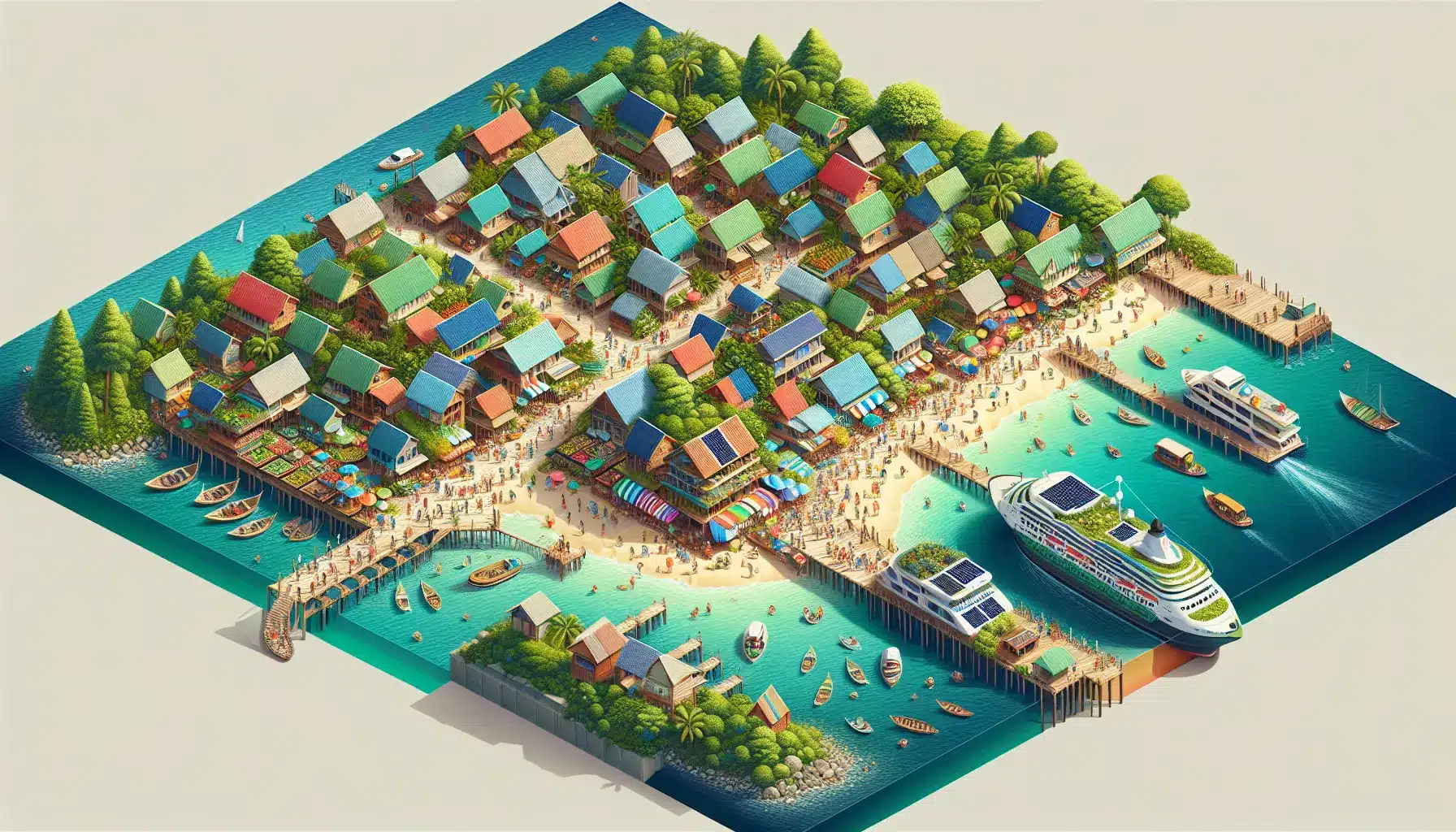As the cruise industry continues to expand, so does its impact on the environment and local communities at various ports of call. In recent years, there has been a growing awareness among cruise lines and passengers alike about the importance of sustainable tourism. This has led to several initiatives aimed at ensuring that the beautiful destinations frequented by cruisers remain pristine and vibrant for generations to come. In this article, we’ll delve into how cruise lines are embracing sustainable tourism practices during their shore excursions, offering travelers the opportunity to enjoy their journeys responsibly.
What is Sustainable Tourism?
Sustainable tourism is an approach to travel that seeks to minimize the environmental impact of tourism, preserve cultural integrity, and provide economic benefits to local communities. For cruise lines, this involves careful planning and execution of shore excursions that are environmentally friendly, culturally sensitive, and socially responsible.
How Cruise Lines Are Promoting Sustainability on Shore Excursions
1. Partnering with Local Communities
Many cruise lines are now engaging in partnerships with local communities to create excursions that directly benefit the locals. This might involve tours led by local guides, visits to community projects, and meals at local restaurants that source their ingredients sustainably. By diverting tourist funds directly into the community, these initiatives help to sustain local economies and reduce the ecological footprint of tourism.
2. Eco-Friendly Tours
With an increasing demand for eco-tourism, many cruise lines are offering excursions that emphasize wildlife conservation and environmental education. These might include guided nature hikes, wildlife observation tours, and visits to conservation parks or marine reserves. These tours educate passengers about local ecosystems and the importance of preserving them, often involving local conservation groups who share part of the tour profits.
3. Reducing Carbon Footprints
Transportation during shore excursions traditionally involves buses or vans, which can emit significant levels of carbon dioxide. In response, some cruise lines are incorporating more eco-friendly transportation options such as electric vehicles or bicycles. For instance, electric shuttle services and bike tours not only reduce emissions but also offer a quieter, more intimate experience of the destination.
4. Support for Sustainable Practices at Tourist Attractions
Cruise lines are increasingly selective about the entities they partner with for shore excursions. They favor attractions that demonstrate sustainable practices, such as wildlife sanctuaries that participate in species rehabilitation or botanical gardens that practice water conservation and protect biodiversity. By supporting these attractions, cruise lines help ensure their viability and encourage other tourist destinations to adopt similar sustainable practices.
5. Cultural Preservation Efforts
An integral part of sustainable tourism is the preservation of cultural heritage. Cruise lines contribute to this by offering excursions that respect and highlight the culture and history of the destinations. This might include tours of historic sites with knowledgeable local guides, cultural shows, or craft workshops that support traditional arts. These activities not only educate tourists but also provide a market for authentic local products, helping to keep traditional crafts alive.
6. Waste Management Initiatives
To combat the problem of tourist-generated waste, some cruise lines have implemented strict guidelines for their shore excursions. This includes practices such as zero-waste picnics, where all packaging is biodegradable, and encouraging tourists to carry reusable water bottles. Additionally, some excursions involve community clean-up activities, such as beach clean-ups, which help to instill a sense of environmental responsibility among passengers.
7. Educational Programs
Education plays a crucial role in sustainable tourism. Many cruise lines now offer pre-excursion lectures or workshops about the local environment and culture. This education extends to teaching tourists how to interact responsibly with wildlife and how to respect local customs and traditions. By preparing passengers for what to expect and how to behave, these programs help ensure that tourist interactions are positive for both visitors and locals.
Examples of Cruise Lines Embracing Sustainable Practices
- Holland America Line has developed a partnership with FOOD & WINE magazine to offer culinary tours that connect guests with local food cultures using sustainable ingredients, supporting both local agriculture and global eco-friendly practices.
- Royal Caribbean and Celebrity Cruises offer a range of Certified Sustainable Tours. These excursions meet comprehensive criteria that include environmental management, support for cultural heritage, and benefits to the local community.
- Norwegian Cruise Line focuses on voluntourism packages, allowing guests to participate in local community projects, which might include teaching English or participating in reforestation efforts.
Conclusion
As the demand for sustainable travel options grows, cruise lines are stepping up by integrating responsible tourism practices into their shore excursions. These efforts not only enhance the cruise experience but also ensure that the beautiful destinations remain unspoiled and that local cultures are respected and preserved. For travelers looking to make their cruise vacations more sustainable, choosing a cruise line that actively supports these initiatives is a significant step towards responsible tourism. By opting for these eco-friendly and culturally respectful excursions, passengers can enjoy the unique experiences that cruising offers while contributing positively to the welfare of our planet and its diverse cultures.
